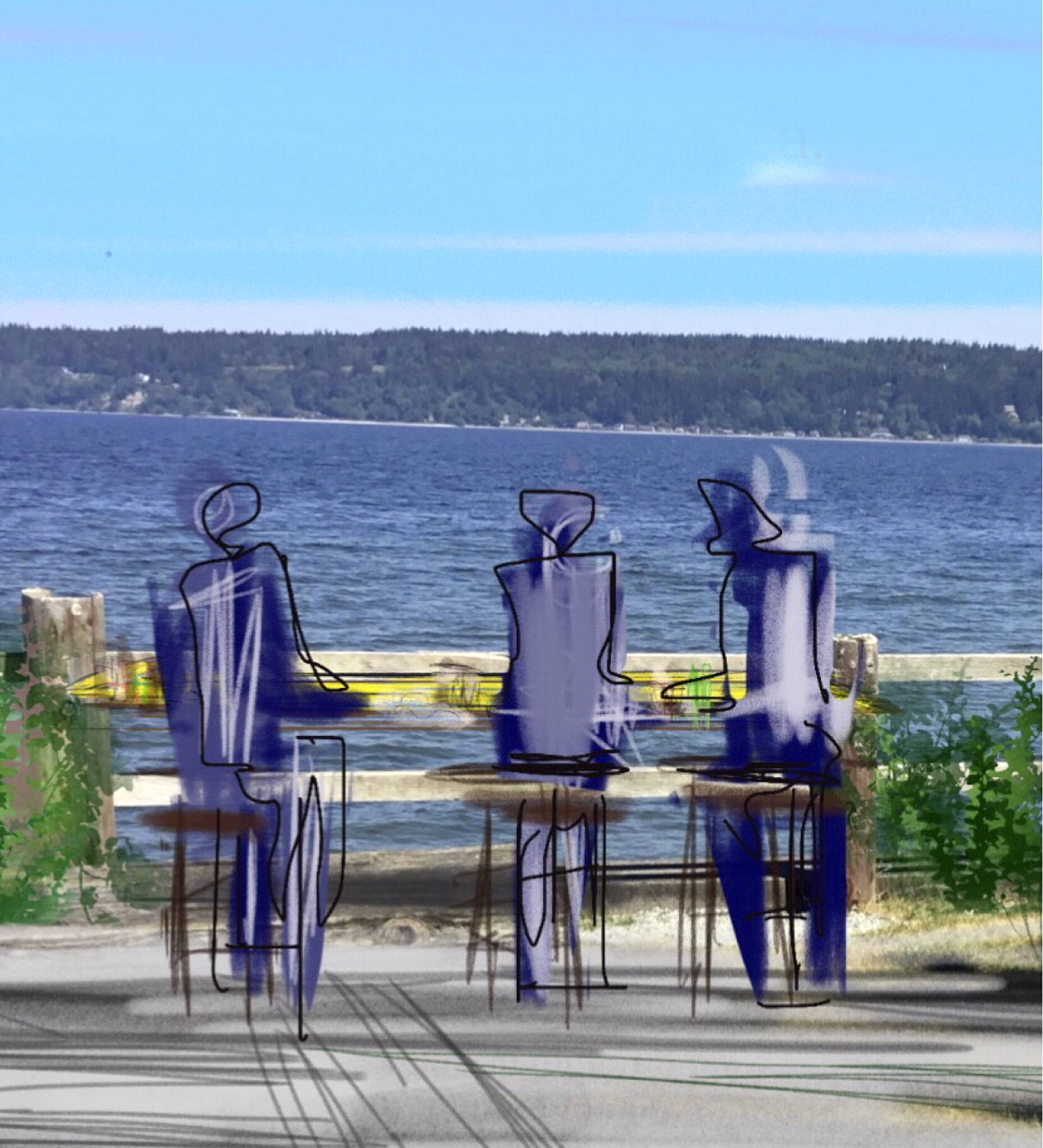A waterfront promenade, innovative warming shelters and wash stations for swimmers, walkers and dogs are among the proposed improvements to Langley’s Seawall Park presented during a recent City Council meeting.
Sharon Emerson, chairwoman of the Seawall Park Subcommittee, discussed highlights and challenges while showing conceptual designs created by artist Jay Davenny.
“Jay developed five features all connected with a promenade along the length of the park,” Emerson said. “We were really awed at his idea. On the whole, it’s a pretty stunning piece of work.”
Davenny was contracted to create the park design with $5,000 provided by the city. His key features include “Burning Stump,” which is a rustic, open-air shelter with a propane fireplace. It would be located on the Anthes end of the park and glow and be visible from First Street.
“This is the most iconic of the five features,” Emerson said. “If people still sent postcards, they’d send this (image.)”
Envisioned using the Japanese technique of charred planks on the exterior, “Burning Stump” would be heated and illuminated. However, if that idea doesn’t fly because of safety concerns, Emerson pointed out it would still provide protection from whipping winds.
The Seawall Park Subcommittee is comprised of numerous citizen advisory committees that have spent two years focusing on the 1.44-acre park strip below First Street. It’s perched above the beach and is largely undeveloped with just a few picnic tables, rough trail and native-inspired art.
Seawall Park has long been viewed as an underachiever. Many say it has the potential to draw more locals and visitors to the waterfront and enjoy the expansive view of Saratoga Passage.
A public meeting on the proposal is scheduled for 6 p.m. Wednesday, Sept. 5, at Langley United Methodist Church.
Four phases to prepare the site and build a promenade, followed by the construction of shelters and other features, is suggested by the subcommittee.
Total cost is estimated at $237,000. No city funds have been allocated for improvements to Seawall Park. Private donations, fundraisers and possibly grants would cover costs, said Frank Rose, arts committee member.
Improving the appearance, accessibility and use of the park without sacrificing its natural beauty is a goal, Emerson said.
Another structure envisioned by Davenny is called “Canopy,” and it would be just that — a canopy of scaffolding set against the bluff greenery near Boy & Dog Park stairs.
“The park faces north and is often cold and windy,” committee member Joann Quintana said in an interview.
“The shelters Jay has come up with should help extend the use of the park by providing warmer, protected places to gather with friends, eat, drink, enjoy the views.”
“The Middens” would be located at the east end, the widest area of the city-owned park. Oyster shells wired together would comprise the walls, meant to evoke oyster shell middens left behind by native people.
One of the challenges of re-imagining Seawall Park “is it is really skinny,” Emerson said, “maybe 12 to 15 feet wide.”
The bigger challenge is the steep declines in elevation at both of the park’s two access points — the hill at Whale Bell Park and the staircase below Boy and Dog Park. Potential solutions to make the park compliant with Americans with Disabilities Act standards is being researched by local resident Chris Salomone.
People who actually get wet are also included in the new design.
“We get more and more people who swim off that park now,” Emerson said. “Some serious swimmers go there a lot.”
Lockers of some kind have been requested by people who need a safe place to tuck keys and cell phones, Emerson said. Wash stations like those used at Double Bluff beach could also help get the sand off of feet and sandals, as well as water the dog.



